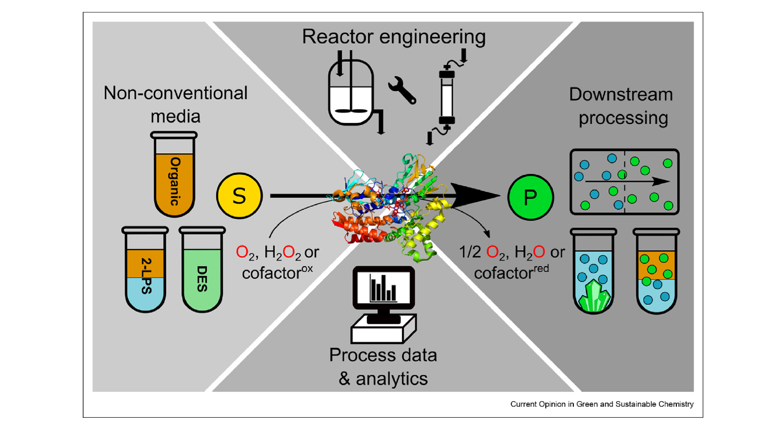“In the last ten years, the number of publications related to process intensification (PI) has been quadrupled. This increasing interest that created many innovations can be found not only in chemo-catalytic processes but has also reached the field of enzymatic processes. The recent scientific and technological advances in bioprocess intensification have been dedicated to improving the use of enzymes in selective oxidative reactions, obtaining more environmentally friendly and resource efficient applications. In this mini-review, we provide an overview of the different PI definitions, and recent studies focusing on intensification of oxidative biocatalytic reactions regarding (i) non-conventional media, (ii) process data and analytics, (iii) reactor engineering, and (iv) downstream processing. Remarking how the advances of other fields can be used for process intensification and for obtaining new goals (e.g., PI 4.0). Model-based simulations and new sensor technologies can guarantee optimal and more automated processes with new reactor designs, together with the use of non-conventional media and enzyme immobilization, to intensify biocatalytic oxidation processes.”

Highlights:
- “For batch-wise operated reactors, traditionally the stirred tank reactor has been used for a wide range of applications and processes. To improve the mass transfer coefficients, some modifications have arisen, leading to rotating-bed–reactors (RBRs) and rotor–stator–reactors (RSRs).”
- “The use of RBRs was demonstrated with three different reactions including transaminase, lipase, and cyclohexanone monooxygenase (CHMO) to enable better mixing and biocatalyst recycling [45]. […] The residual activity of the CHMO was around three times higher after six cycles in comparison with the stirred tank reactor, concluding a significant improvement for industrial application”
- “The rotating bed allows keeping the whole cells inside while expulsing the liquid inside the rotating basket and new liquid from the reactor enters. The biocatalyst can be easily replaced after the enzyme is not active anymore without any tedious steps.”

